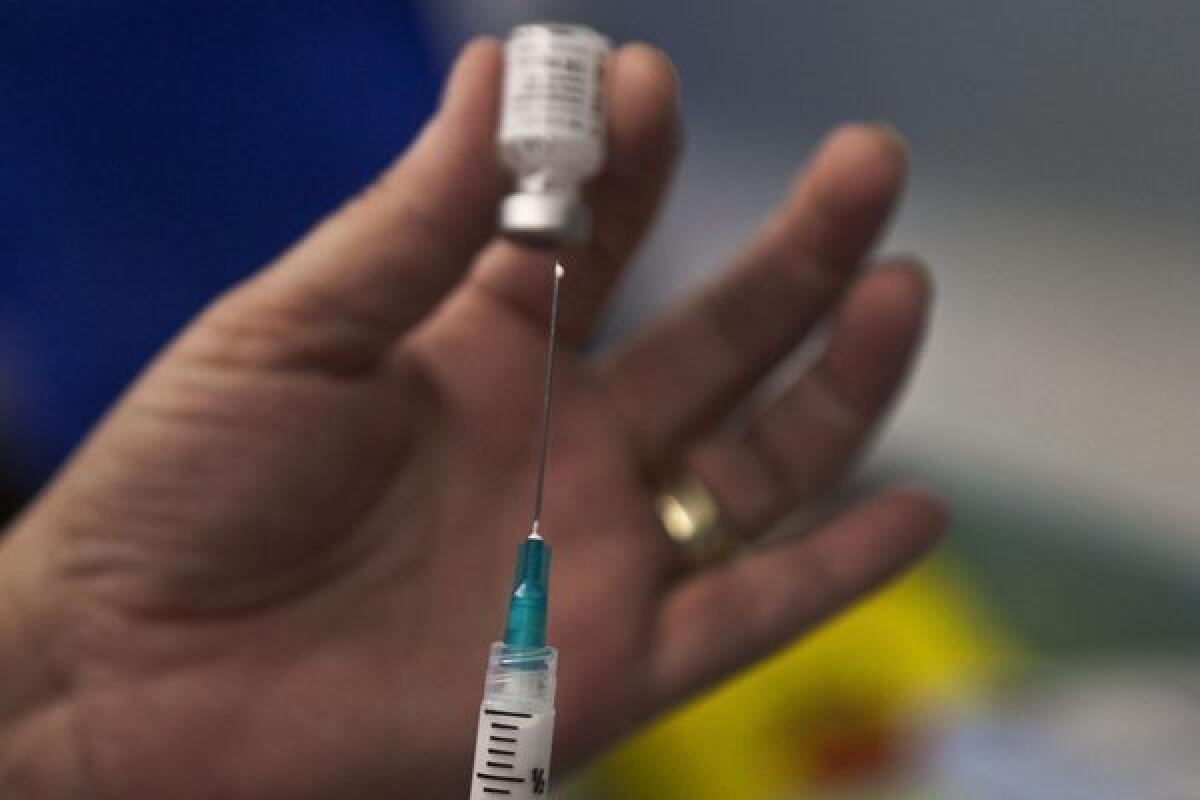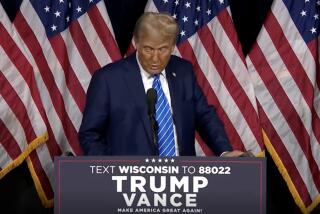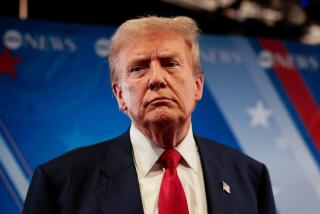Column: Trump says insulin is now so cheap, it’s ‘like water.’ It isn’t

There was much to dislike in this week’s presidential debate — the lies, the rudeness, the inability of the White House incumbent to rise above the level of a cranky kindergartner.
For me, the low point came not when President Trump refused to condemn white supremacy, and not when he tore into the sons of Democratic candidate Joe Biden, but when he once again sought to convince the American people that he had single-handedly lowered the cost of prescription drugs.
Trump claimed that drug prices “will be coming down 80% or 90%” thanks to him.
He claimed that a series of executive orders have forced pharmaceutical companies to slash prices.
And the one that floored me: Trump claimed that the cost of insulin is now so low, it’s practically free.
“I’m getting it for so cheap, it’s like water,” he said. “You want to know the truth? So cheap.”
Like water.
“Saying that insulin is as cheap as water is a complete disconnect from reality,” said Vivian Ho, a healthcare economist at Rice University.
“For the overwhelming majority of the millions of Americans with diabetes who depend on insulin, the prices are outrageous,” she told me. “People have been dying because they can’t afford insulin.”
I don’t want to make this about me. This is about a country saddled with a former game-show host who believes he can say anything to advance his personal and political interests.
But as someone with Type 1 diabetes who relies on daily insulin doses to stay alive, I found Trump’s remarks particularly offensive, even for him.
It may take some effort for many Americans to fact-check Trump’s claims that Mexico is paying for his border wall or that he’s accomplished more than all other presidents.
The high price of drugs, on the other hand — no ambiguity there. Stratospheric drug costs hit nearly every American family where they live.
Spending on prescription meds soared from $354 billion in 2009 to about $535 billion in 2018, according to the Department of Health and Human Services.
This is an increase of more than 50% compared with 17% inflation over the same period. Drug spending is expected to approach $600 billion this year.
As for insulin, well, Trump is taking a modest improvement for some people with diabetes and presenting it as a political triumph for all.
What he was apparently referring to with that comment about insulin now being “like water” was an announcement in May from the Centers for Medicare and Medicaid Services that some (but not all) Medicare plans would cap monthly insulin co-payments by seniors at $35.
This won’t begin until next year. It also will affect less than half of the estimated 7.4 million Americans with diabetes who use insulin, leaving everyone else to continue paying as much as $300 per vial, which in many cases is less than a month’s supply.
Presumably this savings for some people taking a single drug is what Trump meant when he boasted of cutting drug prices by as much as 90%.
His other claims during the debate that he had introduced a “most-favored nations” policy that will bring U.S. drug prices more in line with lower overseas prices, and that he has allowed states to import drugs from Canada, represent wishful thinking.
Neither proposal has been implemented, and they may never be without congressional support.
“Much of what the president says is inaccurate and can be easily verified to be wrong,” said Omar Galarraga, an associate professor of health services, policy and practice at Brown University.
“This administration does not seem to have a real plan for dealing with drug prices,” he said. “It is really just trying to distract from the catastrophic reality that over 200,000 Americans have died” of COVID-19.
The last time Trump publicly addressed insulin prices, it didn’t go so well.
“I don’t use insulin. Should I be? Huh?” he wondered aloud while announcing the $35 insulin cap for some Medicare beneficiaries.
A reporter asked why anyone who doesn’t have diabetes would use insulin. Trump, at a loss for an answer, turned to Surgeon Gen. Jerome Adams.
“People such as you and I, we make our own insulin,” Adams explained to the leader of the free world. “So, yes, we do utilize insulin, but we make it ourselves.”
“Ah,” the president replied.
That exchange perfectly encapsulates Trump’s ignorance and arrogance when it comes to prescription drugs.
For him, this is all about currying favor with needed voters — seniors — as opposed to addressing ongoing problems with our dysfunctional healthcare system.
Insulin was discovered by a trio of Canadian scientists in the 1920s. They sold the patent to the University of Toronto for a mere $1, and the university in turn licensed it to pharmaceutical companies worldwide to make insulin as affordable and widely available as possible.
Today just three companies control the global market for insulin — Eli Lilly, Novo Nordisk and Sanofi — and they’ve tripled the price in recent years.
A vial of insulin is now almost 30,000% more expensive than the original cost of the patent.
As I’ve noted previously, most healthcare experts say that if we really wanted to reduce the price of drugs, the easiest way is to allow Medicare to negotiate costs on behalf of its 60 million beneficiaries.
This is how nearly all other developed countries do it with their own government-run insurance plans. Medicare is prevented by law from haggling with drug companies.
Most other countries also impose limits that allow pharmaceutical firms to make a fair profit but prevent them from taking advantage of the sick. We let drug companies charge as much as they want.
So when Trump says drug prices in general are coming down by as much as 90%, and when he says insulin in particular is now “so cheap” it’s “like water,” he is, to put it politely, not being accurate.
“As with so much about healthcare, Trump has promised much and delivered little,” said Jack Needleman, a healthcare economist at UCLA.
“Promises to lower prescription drug prices dramatically have been followed with proposals that are small or not implemented,” he told me.
“Vials of insulin continue to cost around $300, far more than even the most overpriced bottled water, much less the tap water available in our homes.”
Unless Trump was thinking about Fillico, a “luxury” water from Japan. It sells for about $100 a bottle.
Even then, a vial of insulin for most people costs three times as much.
More to Read
Inside the business of entertainment
The Wide Shot brings you news, analysis and insights on everything from streaming wars to production — and what it all means for the future.
You may occasionally receive promotional content from the Los Angeles Times.











